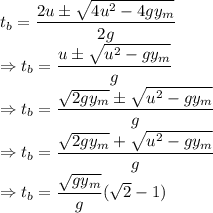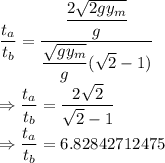
Physics, 13.02.2020 05:51 kolbehoneyman
In the vertical jump, an athlete starts from a crouch and jumps upward as high as possible. Even the best athletes spend little more than 1.00 s in the air (their ""hang time""). Treat the athlete as a particle and let [math]y_{\max }[/math] be his maximum height above the floor. To explain why he seems to hang in the air, calculate the ratio of the time he is above [math]y_{\max } / 2[/math] to the time it takes him to go from the floor to that height.

Answers: 3


Another question on Physics

Physics, 22.06.2019 01:20
Un jugador de beisbol batea un foul recto en el aire.la pelota deja el bate con una rapidez de 120 km/h. en ausencia de resistencia del aire. ? cual sera la rapidez de la pelota cuando la atrape el catcher
Answers: 1

Physics, 22.06.2019 15:00
10 points! will mark brainiest! in a heat engine if 1,000 j of heat enters the system and the piston does 500 j of work, what is the final internal energy of the system if the initial energy was 2,000 j 1: write the equation 2: list out your known variables 3: plug the numbers into the equations 4: solve 5: write your solution statement that includes initial energy and final energy added you so much!
Answers: 3

Physics, 22.06.2019 16:40
An owl dives toward the ground with a constant velocity of 4.40 m/s at 53.0° below the horizontal. the sun is directly overhead and casts a shadow of the owl directly below it. what is the speed (in m/s) of its shadow on level ground?
Answers: 3

Physics, 22.06.2019 18:30
Arailroad car collides with and sticks to an identical railroad car that is initially at rest. after the collision, the total kinetic energy of the two cars is a) the same as before. b) half as much as before. c) one third as much as before. d) one fourth as much as before. e) twice as much as before.
Answers: 1
You know the right answer?
In the vertical jump, an athlete starts from a crouch and jumps upward as high as possible. Even the...
Questions















Computers and Technology, 26.10.2019 00:43














